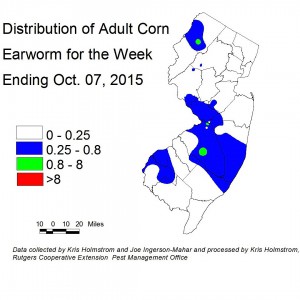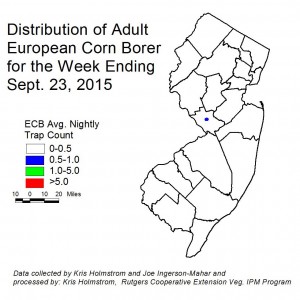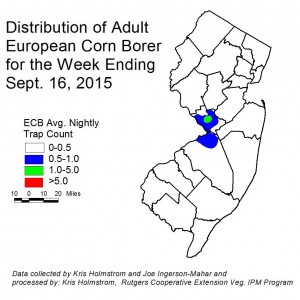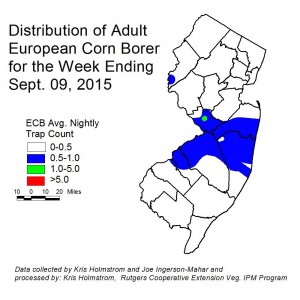Note: The black light trap network has been deployed and is being monitored by IPM Program personnel. The corn earworm (CEW) pheromone trap network is not yet deployed. As adult European corn borer (ECB) and CEW begin to arrive in traps, population maps of these pests will be published in the Plant and Pest Advisory on a weekly basis. Additionally, maps of the brown marmorated stink bug (BMSB) will also appear in this publication. As the CEW pheromone traps in southern NJ begin to register catches, maps of these pest captures will also be published.
Cole Crops
Last week’s warm, sunny days, resulted in some infestations of crucifer flea beetle. Current cold, wet conditions are less favorable for flea beetle activity. These beetles can build to high populations quickly, especially where wild mustard and related cruciferous weeds are common. Mustard greens, radishes, arugula and Tuscan kale are favored hosts. Extreme feeding on small transplants can cause irreversible damage if not controlled promptly.
While flea beetles may be controlled with foliar applied insecticides, it is possible to get 2-3 weeks of protection by using a soil applied systemic insecticide at planting. This insures good establishment of the transplants without significant flea beetle injury.
Cyantranilaprole – Verimark (28)
Dinotefuran – Scorpion/Venom (4A)
Imidacloprid – Admire Pro (4A)
As yet, no imported cabbage worm or diamondback moth larvae have been detected in new field plantings. As these pests appear, identification, scouting procedures and control measures will be outlined in the update.




